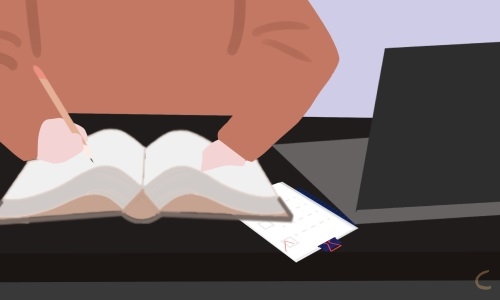能在日常交际情景中听懂对话,例如,能听懂连续的指令并据此完成任务;能引出话题并进行几个回合的交谈;一起看看初一年级英语教案!欢迎查阅!
初一年级英语教案1
一、教学目标:
1. 语言知识目标:
1) 能掌握以下单词:
guitar, sing, swim, dance, chess, play chess, draw, speak, speak English, join, club
能掌握以下句型:
① —Can you play the guitar? —Yes, I can./ No, I can't.
② —What can you do? —I can dance.
③ —What club do you want to join? —I want to join the chess club.
2) 能了解以下语法:情态动词can的用法
want to do sth.的用法
2. 情感态度价值观目标:
以培养学生的一种群体意识。
二、教学重难点
1. 教学重点:
1) 学习询问和谈论彼此的能力和特长;2)
2. 教学难点:
情态动词can的构成和使用。
三、教学过程
Ⅰ. Lead in
1. : I can play the
guitar.…等;再指着图片说:He/She can play the violin.Can you play the guitar?….并引导学生进行简单的回答。
Then Check the answers with the class together.
Ⅱ. Presentation
He/She can dance/swim/sing//...等,学习表达活动的动词短语。 Ⅲ. Game (What can I do?)
T: Tell your partners what you can do. For example:
I can play the guitar. I can sing and dance.
Ⅳ. Listening
1. T: Now let’
(播放lb1b部分的教学任
务。)
Ⅴ. Pair work
(lc部分口语交际的教学任务,学会运用can询问和表达能力。) Ⅵ. Listening
力和写作能力,完成2b部分的教学任务。
Check the answers with the Ss.
Ⅶ. Pair work
1. Look at 2b and talk about what the people can do and the clubs they want to join.
老师可以和一名优秀的学生做一个对话的例子,让学生们明白如何去问答,例如:
T: What club does Lisa want to join?
S1: She wants to join the chess club.
T: Can she play chess?
S1: No, she can't.
2. Ss work in pairs to practice asking and answer about Lisa, Bob and Mary.
3. Ask some pairs to act out their conversations.
Ⅷ. Role-play
1. Ask Ss to look at the picture in 2d. Then Ss read the dialogue by themselves and try to find out the answers to
these questions.
① What club does Bob join?
② What club does Jane join?
Ss read the conversation by themselves and find the answers to the questions. Then check the answers:
① Bob joins the soccer club. ② Jane joins the English and art club.
2. Explain something that Ss can't understand.
3. Let Ss read after the teacher or play the recording and let Ss read after the recording.
4. Ss work in pairs to act out the conversation.
best.
Homework:
1. Remember the new words and expressions after class.
2. Write English names as many as possible in the exercises book.
初一年级英语教案2
一、语言知识与技能
1.根据读音规则和音标拼读单词。
2.理解和领悟词语的基本含义、语法项目以及语言形式的基本结构和常用表意功能;
3.能在日常交际情景中听懂对话,例如,能听懂连续的指令并据此完成任务;能引出话题并进行几个回合的交谈;
4.能听懂接近正常语速、熟悉话题的语段和简单故事,获取相关信息;
5.能运用…..词汇和…..语言形式就熟悉的话题进行交谈;能运用…..词汇和…..语言形式及(或)所给提示描述人、物、事件、行为、特征等,表达简单的观点;
6.能在教师的指导下进行简单的角色表演;
7.能连贯、流畅地朗读课文;能从简单的故事和短文中找出有关信息,抓住大意;根据上下文猜测生词的意思;
8.每天课外阅读量最少达到200词。
9.能运用…..词汇和…..语言形式以及参照范例(文章结构)写出简单的文段等,包括起草和修改。
二、文化意识
10.了解语言和语用的文化因素,体验跨文化交际。
三、学习策略
11-(1)利用读音规则和音标拼读词汇,利用上下文、非语言信息等理解词义,联想学习和记忆词汇,构词法等。
11-(2)利用情境等理解语法结构和表意功能,发现语言规律并举一反三。
11-(3)复习、整理归纳所学内容。
11-(4)利用预测、语调、重音、问题等来获取听力信息。
11-(5)在课内外活动中借助体态语用英语交流。
11-(6)利用预测、跳读、寻读、细节读等来获取文章信息。
11-(7)仿写短文,准备素材、起草短文并修改。
11-(8)明确目标,制定计划,
11-(9)了解并跨文化交际(恰当使用)。
四、情感态度
12.乐于参与英语活动,敢于用英语表达,积极与他人合作,体验自己的学习效果。
备教学
重、难点
内容
课标具体知识、技能、文化目标
知识与技能、文化意识的重、难点内容
课标具体策略目标选择
sectionA
sectionB
目标1
在读写过程中,能够根据读音规则和音标拼读单词。
11-(1)
11-(2)
11-(3)
目标2
词汇:mysister,myparents,yourparents,haveagoodday,mygrandparents
语言形式:
1.This/Thatis...
2.These/Thoseare...
3.Who’sshe/he?She/Heis...
4.Whoarethey?Theyare...
is,are缩略形式
主格代词I,he,she,they的用法
名词复数
指示代词this/that与these/those单复数形式转换
(具体见grammarfocus)
词汇:familytree,thosegirls,theseboys,twophotosofmyfamily,inthefirstphoto,inthenextpicture,thesetwogirls,inmyfamily.
语言形式:
1.同前面的语言形式。
2.Hereis/are…
3.Arethese…?Yes,theyare./No,theyaren’t.
初一年级英语教案3
一、语言知识与技能
1.根据读音规则和音标拼读单词。
2.能够表述词语的基本含义、语法项目以及语言形式的基本结构和常用表意功能;
3.能在课堂活动中用简短的英语进行交际,例如,能听懂学习活动中连续的指令和问题,并做出适当反应;
4.能听懂有关熟悉话题的语段和简短的故事,获取相关信息。
5.能运用本单元的词汇和语言形式就熟悉的话题进行简单的交流;能运用本单元的词汇和语言形式及所给提示简单描述人、物、事件等;
6.能在教师的指导下进行简单的角色表演;
7.能正确地朗读课文;能从简单的故事和其它文体的短文中找出有关信息,抓住大意;
8.每天课外阅读量最少达到200词。
9.能运用本单元的词汇和语言形式以及参照范例(文章结构)描述系列图片,编写简单的故事等,包括起草和修改。
二、文化意识
10.了解语言的文化因素,体验跨文化交际。
三、学习策略
11-(1)利用读音规则和音标拼读词汇,利用上下文、非语言信息等理解词义,联想学习和记忆词汇,构词法等。
11-(2)利用情境等理解语法结构和表意功能,发现语言规律并举一反三。
11-(3)复习、整理归纳所学内容。
11-(4)利用预测、语调、重音、问题等来获取听力信息。
11-(5)在课内外活动中借助体态语用英语交流。
11-(6)利用预测、跳读、寻读、细节读等来获取文章信息。
11-(7)仿写短文,准备素材、起草短文并修改。
11-(8)明确目标,制定计划,
11-(9)了解并跨文化交际(恰当使用)。
四、情感态度
12.乐于参与英语活动,敢于用英语表达,积极与他人合作,体验自己的学习效果。
备教学
重、难点
内容
课标具体知识、技能、文化目标
知识与技能、文化意识的重、难点内容
课标具体策略目标选择
sectionA
sectionB
目标1
在读写过程中,能够根据读音规则和音标拼读单词。
11-(1)
11-(2)
11-(3)
目标2
词汇:
pencil,book,eraser,box,
pencil-box,schoolbag,
dictionary,his,mine,
hers,excuseme,thank,teacher,about,whatabout,yours,for,
thankyouforhelp,welcome,
youarewelcome,
语言形式:
(1)Isthisyourpencil?
Yes,itis./No,itisn’t.
(2)Aretheseyourbooks?
Yea,theyare./No,theyaren’t.
(3)Whataboutthis
dictionary?
(4)Thankyouforyourhelp.
You’rewelcome.
(具体见grammarfocus)
词汇:
baseball,watch,
computer,game,card,
IDcard,hotebook,ring,
bag,in,library,ask,ask..for,find,some,classroom,e-mail,at,call,lost,must,asetof
语言形式:
1.同前面的语言形式。
2.Howdoyouspellit?
3.Asktheteacherforhelp.
4.Callmeat685-6034.
初一年级英语教案4
Language Goal:
Talk about what people are doing.
Teaching Aims:
The present Progressive (结构式: Be + V-ing )
Key Points:
---What’s he doing ?
---He’s reading.
Difficult points:
现在进行时的用法和动词V-ing 形式的构成。
Teaching Methods:
由浅入深,设置场景、对话以及表演来教授新句型。
Teaching Aids:
教学图片、教学光盘、VCD机、录音机
Teaching Procedures:
Step1. Warming – up
A. Duty report
Teacher: How are you, boys and girls?
S s : Fine, thank you.
Teacher: OK, who’s on duty today?
(the student who is on duty starts to make a duty report)
B. Ask and answer
(The teacher asks some Ss to answer questions and writes down the verbs in the sentences on the blackboard.)
T: Usually, what time do you go to school?
S1: ……
T: When does your father watch TV in the evening?
S2: ……
T: Do you do your homework in the evening?
S3: ……
T: When do you play soccer?
S4: ……
T: what time do you usually eat dinner?
S5: ……
(The teacher should encourage the students after questions.)
The teacher ask the students to read these five verbs for several times.
Step 2. Presentation
A. Match the words and the activities.
Ask the students to turn to page 83, and look at the pictures in 1a.
Then,the teacher ask questions:
----What’s he doing? (Picture 1)
----He’s making a telephone call.
(Help the students answer the question with body language .)
Ask and answer just like that, and finish 1a.(Ss can guess the meaning of doing homework, watching TV, cleaning, eating dinner and reading.)
The Ss read these V-ing words after the teacher.
B. Play the video.
To make the Ss clear what they are learning in this class. Mr. Gong’s words do give the teacher a big hand.
(Write down the title of Unit 14 I’m watching TV on the blackboard and ask the Ss to read it.)
C. Teach the Present Progressive.
1. Introduction
Tell the Ss what the Present Progressive is. (现在进行时表示现在正在进行或发生的动作, 它的表现形式为Be Verbs + V-ing ---- 这也即为它的结构式.)
2. Tell the difference
Write down the V-ing forms by another lines of go, watch, do, play and eat on the blackboard. Ask the Ss to have a look and find the difference between them. For example: go and going, watch and watching, do and doing, etc. Then, ask the Ss to read them again.
3. Listen to the tape.
Let the Ss get ready to listen to the tape (paper and ball-point pen).
Check the answer: 2 4 1
4. Activities.
The teacher acts several actions and say :”What am I doing?”, help Ss answer: ”I’m opening the door.”
(The other actions: look at someone, clean the window)
Write down the three sentences on the blackboard, and ask the Ss to pay attention to the important words underlined:
n What am I doing?
n I’m opening the door.
n What am I doing?
n I’m looking at him.
n What am I doing?
n I’m cleaning the window.
5. Pairwork.
Ask and answer questions about what people are doing in the picture.
u What’s he doing?
u He’s reading.
The Ss can practice different sentences upon the verbs on the blackboard.
6. Guessing game.
The teacher prepare several pieces of paper and there are different actions on it. Ask a pair of Ss to act it out. (Each pair of Ss choose two pieces of paper and act.)
(The Ss must like to do it, so the teacher can ask many pairs to do this game and, the Ss can be familiar with the Present Progressive step by step. They can have fun in the classroom during this class, it’s the most important.)
7. Self-assessment.
The teacher prepare for the Ss some listening exercises, and play the cassette, let them finish these exercises at once. Then, check the answer. The Ss can understand whether they have learned about the Present Progressive.
8. Do the exercises.
The teacher have the Ss some exercises, and ask the Ss to do at once.
<1>--What’s Li Lei doing?
-- He_____________. ( read )
<2>--What’s his mother doing?
--She_____________. ( write )
<3>--What are they doing?
--They_____________. ( play soccer)
<4>--What are David and Mary doing?
--They_____________. (have dinner)
<5>--What’s Jenny doing?
--She______________. ( run )
(In fact, the Ss don’t have enough time to finish the exercises, so they can go on and finish these exercises after class.
Step 3. Homework
1. Finish the exercises in the class.
2. Make a conversation and act it out with your partner.
Step 4. The end
T: You are very good today, boys and girls! And thank you for listening. Bye.
初一年级英语教案5
【学习目标】:1、熟练掌握本课6个单词.
2、学会询问他人姓名及介绍他人姓名.
3、能听懂有关谈论他人姓名的对话并进行自由交际.
【学习重点】: 询问他人姓名及介绍他人姓名的句型.
一、自主学习(教师寄语:Knowledge is power.)
学习任务一: 熟练读 写本课6个单词.
1.个人自渎,记忆本课单词.
2.小组互相检查单词读写情况.
3.根据汉语写出下列英语单词并展示.
学习任务二: 运用句型:What's his / her name?
His / Her name is .... 进行自由交际.
1.小组合作,理解并熟读下列短语,并写出汉语意思.
my nane ( ) your name ( )
his name ( ) her name ( )
2.个人理解下列对话,并且两人合作练习.
A:Hello! What's your name?
B:My name is Gina.
A:Nice to meet you.
B:Nice to meet you,too.
A:What's her name?
B:Her name is Jenny.
3.小组合作,练习自己的对话.
4. 对抗组开展竞赛,展示自己的对话.
学习任务三: 听听力完成2a,2b.
1.个人看图,理解四幅图画,思考图画中人是在谈论他人还是对方.
2.听听力,给四幅图画编号.
3. 小组为单位,熟读2b中的名字。
4.听听力,完成2b.
二、合作共建(教师寄语:Many hands make light work. )
讨论下面两句话如何用英语表达.
1.他叫Bob.
2.她叫Jenny.
三、系统总结(教师寄语:No man can do two things at once.)
根据提示,完成下列问答.
_______ _______
What's _______ name? _______ is ....
_______ ________
四、诊断评价
1、 写出下列短语.
(1)我的时钟 (2)你的问题
(3)他的名字 (4)她的回答
2、 根据句意及首字母补全单词。
(1)_________ is your name ?
(2)Nice to m________you.
(3)His a _________is good.
(4)L______! His clock is beautiful(漂亮的) .
三、选择
1. _______, What's his name? His name is John Green.
A. Hi B. Oh C. Sorry D. OK
2. She is a girl(女孩).What's ______ name?
A. her B. she C. she's D.his
五、【课后反思】(教师寄语:Never do things by halves)
初一年级英语教案相关文章:
★ 七年级上册英语备课教案范文
★ 初中七年级英语教案模板
★ 七年级上册英语教案范文2020模板
★ 初中生七年级英语教案范文模板
★ 初一年级英语下册教案模板
★ 关于初中七年级英语教案范文合集总汇
★ 初中一年级英语教案模板
★ 新课标初一英语教案模板
★ 初一初二英语教案设计
★ 新课改初中英语教案模板
初一年级英语教案
上一篇:人教初一上册英语教案
下一篇:返回列表



